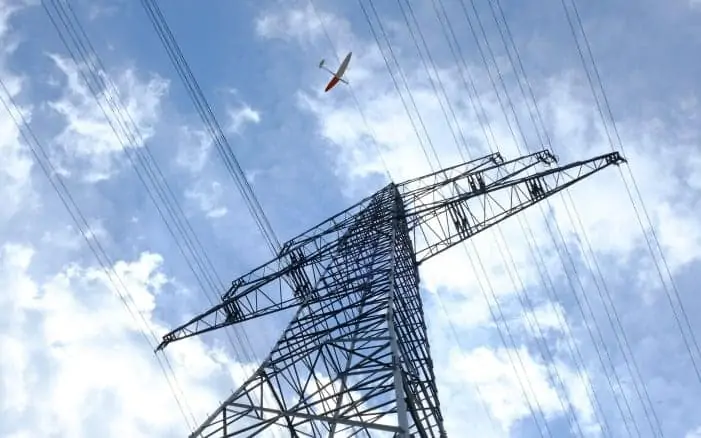
Delair-Tech and electrical services company RTE have announced that they have set a new distance record by flying a civilian drone 30 miles (50 kilometers) beyond visual line of sight (BVLOS). The official purpose of the flight, which took place in France, was to inspect RTE’s power lines by remote camera as well as to record data that would allow it to build models of its European power grid.
Delair-Tech used for the first time a 3G communication network to guide the drone. Two pilots were used for takeoff and two for the landing phase. The flight was performed on autopilot with GPS data integrated within the drone. To enable this experimental BVLOS flight, the Directorate General of Civil Aviation (DGCA) granted the companies the right to use a specific flight corridor and defined a clear regulatory framework.
“More flexible to use, the UAV offers a complementary solution to helicopter inspections for network maintenance conducted by the RTE. This first 30 mile flight illustrates the RTE’s commitment to constant innovation that contributes to electricity that is safer, cheaper, and more respectful of the environment,” said Patrick Bortoli, Director of Maintenance RTE.
“We are delighted to partner with RTE, confirming that renowned industrial customers are committed to drone solutions. In collaboration with RTE, we used for the first time in France a 3G network to guide the drone, allowing real-time communication from any distance. This removes an important technological barrier. It is a first step toward making drones the most common method for inspections of infrastructure that stretches over large distances, such as power lines and pipelines. Drones offer enormous potential to deliver strong efficiency gains for our customers,” said Michael Lagarde, President & Co-Founder of Delair-Tech.
RTE has been experimenting with the use of drones in its operations since 2011. The company began using drones more extensively for shorter-range inspections of its electricity transmission network and its cable laying. RTE hopes to one day use drones for longer-range missions, which could help reduce the cost and mitigate the danger of inspections on infrastructure that is remote and difficult to access, and avoid long interruptions to electricity service when maintenance must be performed.


















